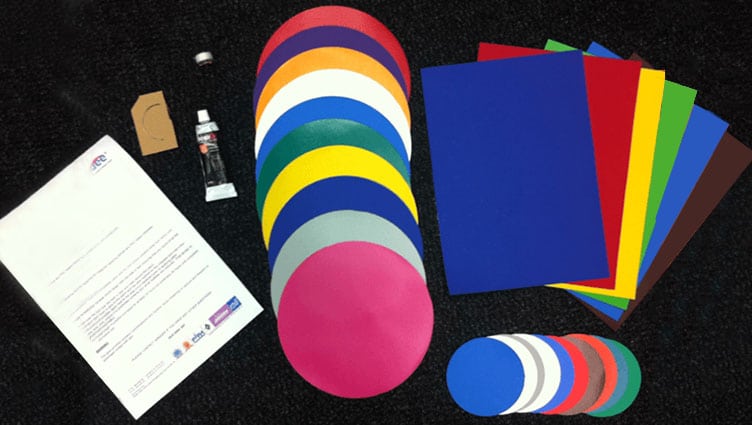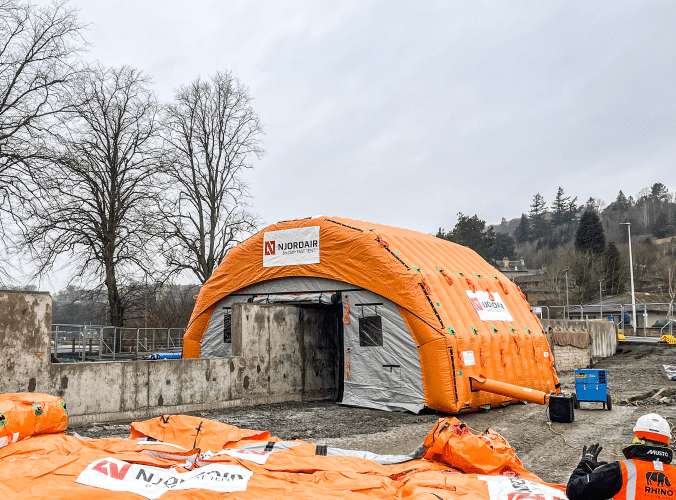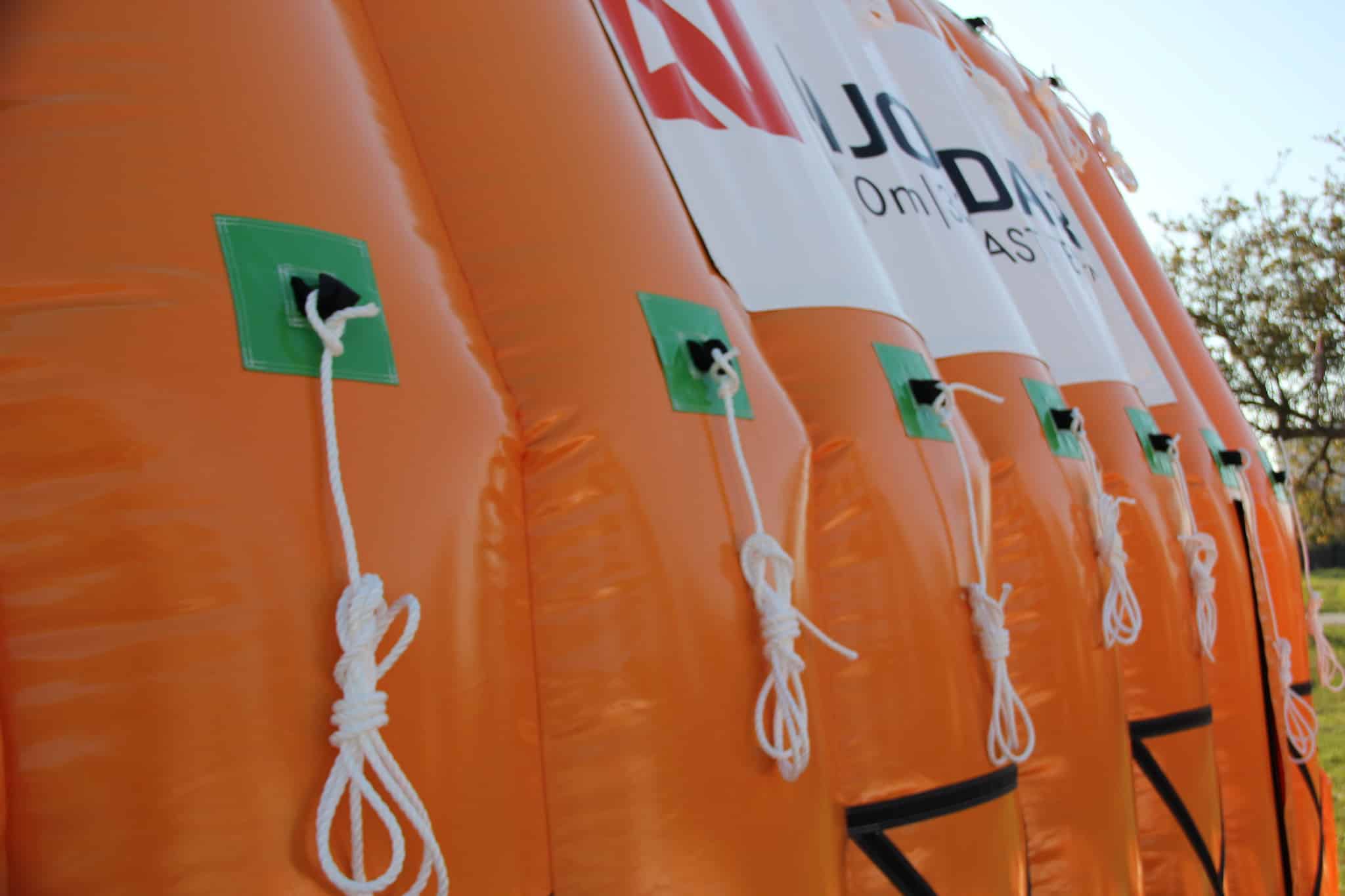What Is The Strength Of A Constant Air Inflatable Building?
Inflatable buildings achieve structural stability by using internal air pressure to put tension into the envelope or skin of the building. This gives the structure a ‘pre-stress’ that enables it to resist applied forces. Constant air inflatable buildings rely on a continuous supply of air to maintain their shape and structural integrity. The internal air pressure helps support the structure and keep it inflated, even in the presence of external forces such as wind or snow loads.
Material Strength
Materials are selected for their strength, tear resistance, and UV stability, ensuring that the constant air inflatable structure remains robust over time. All our inflatable buildings are manufactured from 610 or 630gsm commercial grade PVC coated material which is UV resistant and flame retardant to North American & European standards (BS7837: 1996, BS13501: 2007 + A1: 2009) (NFPA 701 Method 1 & 2, 2015 edition).
Njordair buildings are supplied with a 5 year material defect warranty. If an inflatable, if it is hit with an object, it will flex and absorb the impact rather than snap or break. Once a constant air structure is inflated there is spare capacity in the inflation system (as very little air is required to maintain pressure). This means that in the unlikely event that a structure should be damaged or punctured, the blowers will compensate for the loss of air and maintain the operating pressure of the structure
Wind Load Strength
Constant Air Fast Tent modules are stable in strong winds.
Heavy duty metal ring ground anchors minimum (150Kg / 300lbs pull out strength) handle most of the wind load. For soft surfaces, 1m (3’) long & 40cm (15”) long anchor pegs are supplied as standard. If stakes / pegs cannot be used, (such as when installed on a hard standing), water filled ballast or concrete blocks must be used
In addition to the ground anchors, heavy duty webbing multi directional mid level anchors (minimum 150Kg / 300lbs pull out strength) provide additional stability.
Snow Load Strength
With an internal pressure of 1.09 -1.3 kPa, a Fast Tent inflatable building will resist 20kg per m² (13lbs per square foot) without any unsafe deflexion which is equivalent to 6” (150 mm) height of snow load. The peaked roof design of a Fast Tent sheds snow & prevents accumulation.
Internal air fill points mean that if the tent is heated, warm air can circulate throughout the roof and walls to further prevent accumulation of snow and ice.
Inflatable Building Strength – Summary
Overall, when properly designed, manufactured, and maintained, inflatable buildings are very strong and capable of providing rugged shelter and protection in various environments. However, it’s essential to follow our recommended guidelines for installation and usage to ensure the optimal performance and longevity






